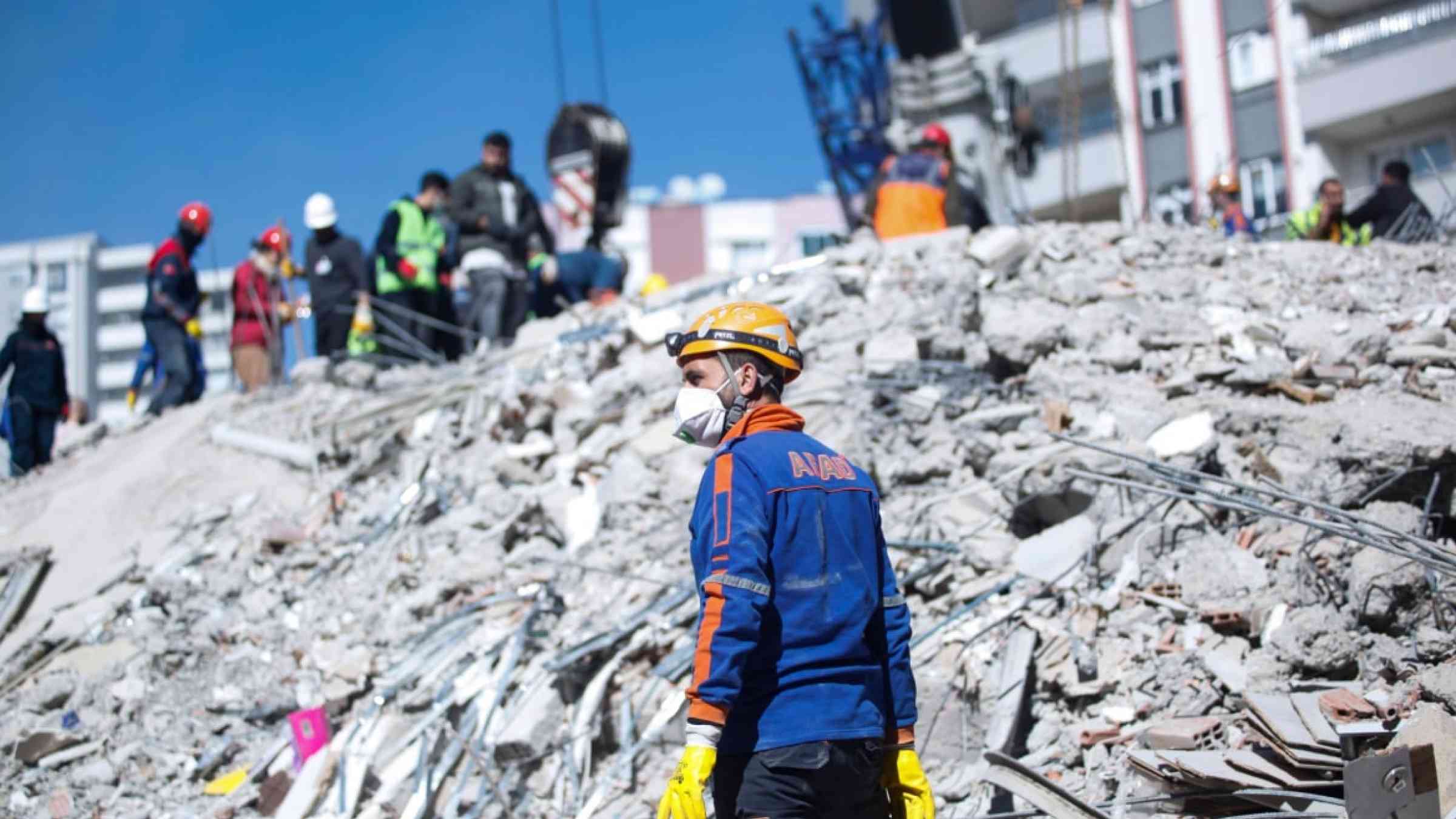Lessons on resilience from a year of global earthquakes

Rapid population growth in disaster-prone regions concentrates people where recovery after extreme events is costly. Disaster and climate risks in the built environment decrease property values, increase insurance premiums, and compound recovery costs, impacting developers, financial institutions, and local governments. Investment in resilience is crucial.
Japan, struck by a 7.6 magnitude earthquake on New Year's Day 2024, demonstrated the importance of planning and resilient building strategies. Despite the tragic loss of over 200 lives and more than 300 homes destroyed, the impact could have been far more severe. Thanks to Japan’s years of planning, preparations, and implementation of resilient building strategies, the country has become adept at mitigating the effects of significant earthquakes.
Türkiye and Syria faced destructive earthquakes just a few months earlier, in February 2023, emphasizing the need for greater care and investment in resilient buildings and critical infrastructure. The earthquakes led to significant destruction, with more than 50,000 deaths in Türkiye alone, widespread demolition of buildings, and over $34 billion in estimated total damage, equivalent to 4 percent of Türkiye’s 2021 GDP. The majority of the damage was sustained by the housing sector, serving as an urgent reminder of the necessity for resilient buildings and critical infrastructure.
Seismic resilience begins with understanding local geological conditions. Türkiye's earthquake highlighted the impact of soil types on building integrity. Buildings that remained intact on solid soil contrasted sharply with similar typologies that collapsed on soft soil. Building on less-than-optimal soils does not automatically doom a structure, but it requires careful engineering of the foundation to mitigate risks.
The September 2023 earthquake in Morocco further underscored the importance of well-constructed buildings. Both traditional and modern construction systems exhibited similar levels of resilience when buildings were well-constructed, but they performed equally poorly when inadequately built or subject to unsuitable changes.
One prevalent building type that suffers excessive damage during seismic events, common in emerging markets, is the well-known “soft story” structure. These buildings, composed of several levels where the structure differs at the ground floor compared to higher floors, are susceptible to collapse. This design, which allows for shops on the ground floor with apartments above them, often results in a weaker structure under the stress caused by earthquakes. The danger of the “soft story” structure became evident during the California earthquake of 1994, where 40 percent of all casualties were linked to this specific building type. Similar lessons were drawn from the 2010 earthquake in Haiti, which severely damaged more than 250,000 homes, many of which were “soft story” buildings. Fortunately, specific measures can strengthen new and existing buildings, including those with a “soft story.”
Measures such as properly connecting walls and slabs, sizing a building’s structure, using sophisticated technologies like shock absorbers, and implementing base isolation can significantly enhance a building's resilience. Base isolation technology, a technique used in almost 10,000 buildings in Japan, enabled some of Türkiye's hospitals to sustain little to no damage and continue to operate in the wake of aftershocks. However, proper inspection during construction by qualified engineers is critical. Countries often have excellent construction codes but lack enforcement. In Türkiye, all hospitals, schools, and public infrastructure projects that underwent inspection during construction performed much better than privately owned apartments or commercial structures, which do not follow the same level of inspection procedures.
Simple measures, like household-level devices that shut off natural gas during shocks, can mitigate disaster impact. Strengthening resilience involves adopting the latest building codes for new construction and retrofitting existing buildings. The implications are clear; in Türkiye, buildings erected after the 1998 update to the code fared significantly better than their older counterparts.
IFC provides financial solutions and policies like resilience loans or bonds to drive investment in resilience and adaptation. Among the codes and standards developed globally to improve resilience, IFC created the Building Resilience Index (BRI), an innovative tool that helps developers and investors evaluate real estate resilience and adopt measures to increase safety and operational continuity. By enabling a comprehensive evaluation of a building’s exposure and vulnerability, BRI empowers stakeholders to make informed decisions about design, construction, and retrofitting strategies.
IFC reports that every US$1 invested in resilient buildings can save US$4 in recovery costs. The urgency of resilience has also been underscored by the United Nations, as the UN Environment Programme identified the need to improve resilience in buildings as part of their Buildings Breakthrough initiative. IFC joined the program, aiming for near-zero emissions and resilient buildings to be the new normal by 2030.
IFC's participation in the Buildings and Climate Global Forum signals a hopeful future, where casualties and collapsed buildings from natural disasters and climate change could become increasingly rare. It emphasizes the importance of adopting and enforcing improved building codes, refining resilience approaches based on global good practices. Through such steps, we can apply lessons globally, enhancing safety and resilience in the face of natural disasters and climate change.